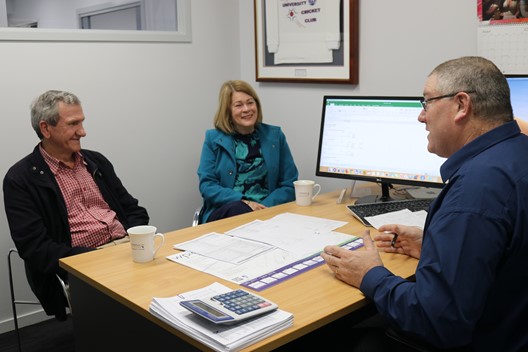Transitioning into retirement
According to research, one in three Australians aged 45 or older say they plan to work part-time before retiring altogether.
For those, a good option might be to transition into retirement.
Transition to Retirement pensions are tax-free, and TTR strategies can provide a number of benefits.
Robertson Scannell Director John Littleproud said a TTR strategy enables you to work less, save tax and increase your superannuation.
"It can be used to provide savings by making tax-deductible contributions into superannuation to help you prepare for retirement," he said. "You'll potentially save thousands of dollars in a short period of time, which may grow your super or give you a tax refund. TTR is also a great way to help you stay active in the workforce while easing into a more relaxed lifestyle."
Let's look at the options available to accountant Brian, 62.
He works full time and is on an annual salary of $100,000. First up, Brian might consider reducing his hours as he prepares for retirement. Dropping from five to three days a week will see his $100,000 annual salary reduce by $40,000 to $60,000. But as his tax bill also falls, from $26,632 to $12,147, his net income only drops by $25,515. Subject to minimum and maximum pension payment rules, and as the pension payments are exempt from tax, Brian only needs to start a TTR pension paying $25,515 each year to maintain his current lifestyle.
Based on Brian’s reduced hours his employer’s super contributions will decrease by $3,230 after contributions tax of 15% is taken into account. Most simply, Brian could add this amount to his pension payments, and make a non-concessional contribution to his super. TTR pensions can also help bridge the gap if household income takes a hit. What if Brian has no plans to reduce his hours, but illness prevents his partner from working for several months? He could start a TTR to tide them over and help meet mortgage repayments or medical expenses. However, once the crisis has passed the TTR pension will need to continue, as it can’t be withdrawn as a lump sum. Alternatively, it can either be converted to a
regular account based pension when Brian either turns 65 or permanently retires, or rolled back into the accumulation phase. With his partner restored to health and back at work, and Brian still working full time, what can he do with the now surplus income from the TTR pension? One strategy is to make salary sacrifice contributions to super.

Brian is able to salary sacrifice up to $15,500 of his pre-tax income to superannuation (the difference between the concessional cap of $25,000 less compulsory employer contributions of $9,500). Taken as salary, $5,932 of that $15,500 would go in tax. Make a concessional
contribution to super and the tax could be reduced to just $2,325, a difference of $3,607!
If there’s still money to spare after the salary sacrifice contribution, Brian can look at making non-concessional contributions to superannuation where earnings will only be taxed at 15%, significantly less than his marginal tax rate.
Mr Littleproud said for those approaching retirement, it was worth checking out what a TTR strategy may be able to achieve for them.
“It’s a complex area, so make sure you talk to a licensed financial planner at Robertson Scannell before you act,” he said.
Disclaimer
This information is provided as an information service only and does not constitute financial product advice and should not be relied upon as financial product advice. None of the information provided takes into account your personal objectives, financial situation or needs. You must determine whether the information is appropriate in terms of your particular circumstances. For financial product advice that takes account of your particular objectives, financial situation or needs, you should consider seeking financial advice from an Australian Financial Services Licensee before making a financial decision.
